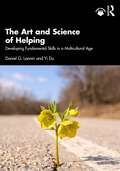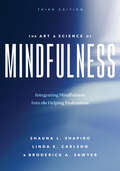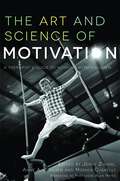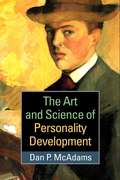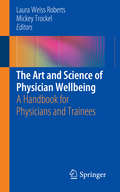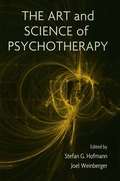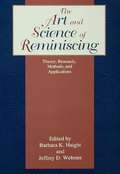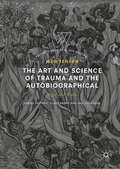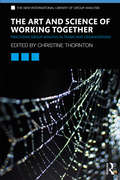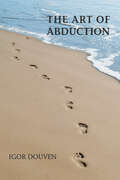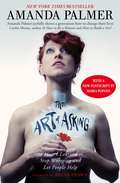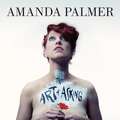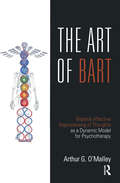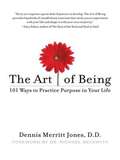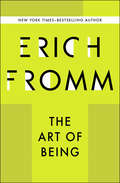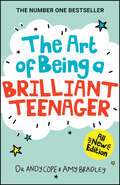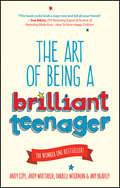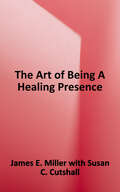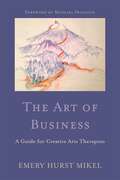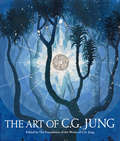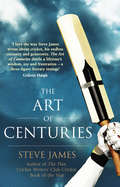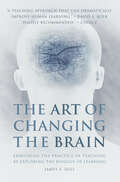- Table View
- List View
The Art and Science of Helping: Developing Fundamental Skills in a Multicultural Age
by Yi Du Daniel G. LanninThe Art and Science of Helping: Developing Fundamental Skills in a Multicultural Age introduces the fundamentals of practicing helping-skills to undergraduates, graduates, and those preparing for entry-level helping professions.The text emphasizes best practices of the art of helping while rooting these practices in empirical, scientific findings. Readers will learn skills and techniques that prepare them for counseling and other helping professions while also developing multicultural competence and self-awareness. Chapters teach helpers who are training to navigate the different phases of helping, including connecting with clients, helping clients discover new understanding, and empowering clients to take action.The Art and Science of Helping aligns with a typical semester and includes ready-to-use classroom activities to develop helping skills and microskills. Each chapter includes multicultural considerations as well as reflections and exercises designed to enhance self-awareness—both critical competencies for burgeoning helping professionals.
The Art and Science of Making Up Your Mind
by Rex V. BrownThe Art and Science of Making Up Your Mind presents basic decision-making principles and tools to help the reader respond efficiently and wisely to everyday dilemmas. Although most decisions are made informally (whether intuitively without deliberate thought, or based on careful reflection), over the centuries people have tried to develop systematic, scientific and structured ways in which to make decisions. Using qualitative counterparts to quantitative models, Rex Brown takes the reader through the basics, like ‘what is a decision’ and then considers a wide variety of real-life decisions, explaining how the best judgments can be made using logical principles. Combining multiple evaluations of the same judgment ("hybrid judgment") and exploring innovative analytical concepts (such as "ideal judgment"), this book explores and analyzes the skills needed to master the basics of non-mathematical decision making, and what should be done, using real world illustrations of decision methods. The book is an ideal companion for students of Thinking, Reasoning and Decision-Making, and also for anyone wanting to understand how to make better judgments in their everyday lives.
The Art and Science of Mindfulness: Integrating Mindfulness Into the Helping Professions
by Linda E. Carlson Shauna L Shapiro Broderick A. SawyerNow in its third edition, The Art and Science of Mindfulness offers a deeper understanding of the concept of mindfulness and explores its potential as a core clinical skill and a way to increase the well-being of both clients and clinicians. Mindfulness helps us to see clearly so that we can make choices grounded in reality and respond to life with wisdom. However, seeing clearly is difficult because the lens through which we view the world is blurred by our parents, teachers, relationships, and society, and they influence our perceptions on conscious and subconscious levels. Practicing mindfulness helps us remove the filters, biases, and preconceived ideas that shape our perceptions and cloud our consciousness. At the deepest level, mindfulness is about freedom: freedom from reflexive patterns, freedom from reactivity, and, ultimately, freedom from suffering. This book navigates how mindful awareness is fundamental to the therapy process, and shows how mindful practice can help therapists and clients cultivate and connect with this deeper awareness. It also aims to present mindfulness as: an important dimension of clinical training with unique contributions toward fostering attention, empathy, presence, and awareness of our own biases and assumptions an empirically supported clinical intervention effective across a wide range of populations a means of fostering self-reflection and self-care for clinicians a way to expand the profession's focus on pathology to include positive growth and development New to this edition is a comprehensive overview of the evidence supporting the neurochemical basis of intention, attention, and attitude; a discussion of implicit bias and how it interferes with connecting mindfully with clients; a discussion of new mindfulness-based interventions and ways to apply mindfulness in therapy, and more.
The Art and Science of Motivation
by Jenny Ziviani Anne A. Poulsen Monica CuskellyPlacing motivation at the heart of all encounters and therapeutic activities, this book presents a groundbreaking, evidence-based model for working with children, including those with physical disabilities, learning disabilities and emotional and behavioural difficulties. Drawing on Self-Determination Theory (SDT), the authors describe this innovative paradigm - the model of Synthesis of Child, Occupational Performance and Environment - in Time (SCOPE-IT) - and explain how it can be used to sustain the child's motivation and active involvement in the therapeutic process. They suggest ways of using language and of structuring and working with the environment to maximise engagement and autonomy and achieve the best possible treatment outcomes. The challenges professionals may face when working with children are also clearly addressed, and engaging case studies and photographs place the key theoretical concepts in a richly human and personal context. Combining accessible theory with a wealth of tools and strategies for practice, this book is essential reading for all those working therapeutically with children, including occupational therapists, speech and language therapists, psychologists and psychotherapists.
The Art and Science of Personality Development
by Dan P. McadamsDrawing on state-of-the-art personality and developmental research, this book presents a new and broadly integrative theory of how people come to be who they are over the life course. Preeminent researcher Dan P. McAdams traces the development of three distinct layers of personality--the social actor who expresses emotional and behavioral traits, the motivated agent who pursues goals and values, and the autobiographical author who constructs a personal story for life. Highly readable and accessible to scholars and students at all levels, the book uses rich portraits of the lives of famous people to illustrate theoretical concepts and empirical findings.
The Art and Science of Physician Wellbeing: A Handbook for Physicians and Trainees
by Laura Weiss Roberts Mickey TrockelThis thoughtful and timely book offers physicians and trainees a wide range of insights and strategies to help ensure not only a healthy lifestyle and sense of wellbeing but the best possible career in medicine as well. With evidence and evidence-informed practices provided by experts, this title affirms the culture of medicine while embracing the fundamental, enduring sense of physicians’ calling and affirming the importance of physicians as individuals whose health and wellbeing has intrinsic value and value to others. Organized in three parts, the first part focuses on the nature of the health professions and on advancing a culture of wellbeing in medicine. The second part focuses on threats to physician wellbeing, including mistreatment during training and burnout, to name just a few. The third part outlines approaches to strengthening physician resilience, such as the sustenance drawn from healthy relationships, mindfulness approaches, and optimal approaches to exercise, nutrition and sleep. The Handbook of Personal Health and Wellbeing for Physicians and Trainees is an invaluable, handy resource for physicians and trainees. Physician assistants, nurse practitioners, clinical psychologists, and social workers will also find the work of great interest.
The Art and Science of Psychotherapy
by Stefan G. Hofmann Joel WeinbergerPsychotherapy, like most other areas of health care, is a synthesis of scientific technique and artistic expression. The practice, like any other, is grounded in a series of standardized principles, theories, and techniques. Individual practitioners define themselves within the field by using these basic tools to achieve their therapeutic goals in novel ways, applying these rudimentary skills and guiding principles to each situation. However, a toolbox full of treatment approaches, no matter how comprehensive, is not enough to effectively reach your patients. Effective work can only be accomplished through a synthesis of the fundamental scientific methods and the creative application of these techniques, approaches, and strategies. The Art and Science of Psychotherapy offers invaluable insight into the creative side of psychotherapy. The book addresses the fundamental split between researchers and scholars who use scientific methods to develop disorder-specific treatment techniques and those more clinically inclined therapists who emphasize the individual, interpersonal aspects of the therapeutic process. With contributions from leading therapists, the editors have compiled a practical handbook for clinical psychologists, social workers, psychiatrists, and mental health professionals.
The Art and Science of Reminiscing: Theory, Research, Methods, and Applications
by Jeffrey D. Webster Barbara K. HaightFirst published in 1995. Routledge is an imprint of Taylor & Francis, an informa company.
The Art and Science of Trauma and the Autobiographical: Negotiated Truths (Palgrave Studies in Life Writing)
by Meg JensenThis book examines posttraumatic autobiographical projects, elucidating the complex relationship between the ‘science of trauma’ (and how that idea is understood across various scientific disciplines), and the rhetorical strategies of fragmentation, dissociation, reticence and repetitive troping widely used the representation of traumatic experience. From autobiographical fictions to prison poems, from witness testimony to autography, and from testimonio to war memorials, otherwise dissimilar projects speak of past suffering through a limited and even predictable discourse in search of healing. Drawing on approaches from literary, human rights and cultural studies that highlight relations between trauma, language, meaning and self-hood, and the latest research on the science of trauma from the fields of clinical, behavioral and evolutionary psychology and neuroscience, I read such autobiographical projects not as ‘symptoms’ but as complex interrogative negotiations of trauma and its aftermath: commemorative and performative narratives navigating aesthetic, biological, cultural, linguistic and emotional pressure and inspiration.
The Art and Science of Working Together: Practising Group Analysis in Teams and Organisations (The New International Library of Group Analysis)
by Christine ThorntonThe Art and Science of Working Together: Practising Group Analysis in Teams and Organizations is a primary resource for anyone wishing to learn more about the complex unconscious dynamics of organizations, providing a practical guide for organizational work, a guide to how to improve things, and a strong theoretical foundation in the group analytic concept of the ‘tripartite matrix’. Group analysis is a highly developed science of group relationships, which allows complexity and systems perspectives to be held in mind alongside organizational psychology, strategic development and business wisdom. Organized into eight sections, the book describes the essence of organizational group analysis, including the art of conversation, leadership, ethical issues in team working, and working with whole organizations. It addresses issues such as ‘us-and-them’ dynamics, the nature of systems boundaries, and the relationship between an organization and its context. Leaders and leading consultants give case studies, describing their thinking as they work, to illustrate the theory in action. This essential new resource will allow clinically trained practitioners to extend their scope into organizational work, and all coaches and leaders to benefit from knowledge of the group analytic discipline. It is essential reading for consultants and coaches working with teams and organizations, and for leaders within organizations.
The Art of Abduction
by Igor DouvenA novel defense of abduction, one of the main forms of nondeductive reasoning.With this book, Igor Douven offers the first comprehensive defense of abduction, a form of nondeductive reasoning. Abductive reasoning, which is guided by explanatory considerations, has been under normative pressure since the advent of Bayesian approaches to rationality. Douven argues that, although it deviates from Bayesian tenets, abduction is nonetheless rational. Drawing on scientific results, in particular those from reasoning research, and using computer simulations, Douven addresses the main critiques of abduction. He shows that versions of abduction can perform better than the currently popular Bayesian approaches—and can even do the sort of heavy lifting that philosophers have hoped it would do. Douven examines abduction in detail, comparing it to other modes of inference, explaining its historical roots, discussing various definitions of abduction given in the philosophical literature, and addressing the problem of underdetermination. He looks at reasoning research that investigates how judgments of explanation quality affect people&’s beliefs and especially their changes of belief. He considers the two main objections to abduction, the dynamic Dutch book argument, and the inaccuracy-minimization argument, and then gives abduction a positive grounding, using agent-based models to show the superiority of abduction in some contexts. Finally, he puts abduction to work in a well-known underdetermination argument, the argument for skepticism regarding the external world.
The Art of Art Therapy: What Every Art Therapist Needs to Know
by Judith A. RubinThe Art of Art Therapy is written primarily to help art therapists define and then refine a way of thinking about their work. This new edition invites the reader to first consider closely the main elements of the discipline embodied in its name: The Art Part and The Therapy Part. The interface helps readers put the two together in an integrated, artistic way, followed by chapters on Applications and Related Service. Included with this edition is a DVD containing two hours of chapter-related video content.
The Art of Asking: How I learned to stop worrying and let people help
by Amanda PalmerREDISCOVER THE FORGOTTEN ART OF ASKING IN THIS NEW YORK TIMES BESTSELLING BOOK 'Amanda Palmer joyfully shows a generation how to change their lives' Caitlin Moran'To read Amanda Palmer's remarkable memoir about asking and giving is to tumble headlong into her world' Elizabeth Gilbert'The Art of Asking is a book about cultivating trust and getting as close as possible to love, vulnerability, and connection. Uncomfortably close. Dangerously close. Beautifully close' Brene BrownImagine standing on a box in the middle of a busy city, dressed as a white-faced bride, and silently using your eyes to ask people for money. Or touring Europe in a punk cabaret band, and finding a place to sleep each night by reaching out to strangers on Twitter. For Amanda Palmer, actions like these have gone beyond satisfying her basic needs for food and shelter - they've taught her how to turn strangers into friends, build communities, and discover her own giving impulses. And because she had learned how to ask, she was able to go to the world to ask for the money to make a new album and tour with it, and to raise over a million dollars in a month.In the New York TImes bestseller The Art of Asking, Palmer expands upon her popular TED talk to reveal how ordinary people, those of us without thousands of Twitter followers and adoring fans, can use these same principles in our own lives.
The Art of Asking: How I learned to stop worrying and let people help
by Amanda Palmer'When we really see each other, we want to help each other' - Amanda PalmerImagine standing on a box in the middle of a busy city, dressed as a white-faced bride, and silently using your eyes to ask people for money. Or touring Europe in a punk cabaret band, and finding a place to sleep each night by reaching out to strangers on Twitter. For Amanda Palmer, actions like these have gone beyond satisfying her basic needs for food and shelter - they've taught her how to turn strangers into friends, build communities, and discover her own giving impulses. And because she had learned how to ask, she was able to go to the world to ask for the money to make a new album and tour with it, and to raise over a million dollars in a month.In The Art of Asking, Palmer expands upon her popular TED talk to reveal how ordinary people, those of us without thousands of Twitter followers and adoring fans, can use these same principles in our own lives.
The Art of BART: Bilateral Affective Reprocessing of Thoughts as a Dynamic Model for Psychotherapy
by Arthur G. O'MalleyThe Art of BART (the Bilateral Affective Reprocessing of Thoughts) is a practitioner's introduction to an innovative psychotherapy model that draws on and integrates well-proven therapies (such as EMDR, sensorimotor psychotherapy and CBT) and on the Indian chakra tradition and other historical beliefs. As a therapeutic approach it has particular relevance to those who are living with the consequences of a traumatic event and those who seek after peak performance in fields such as sport and the arts. The book introduces the reader to BART as a psychotherapy that can benefit patients with disorders such as anorexia nervosa and dissociative identity disorder, and those who have suffered a traumatic event. It also looks at the information processing of the mind-body at the levels of the gut heart and the gut brain, and it makes connections between the endocrine and immune systems and the chakras of Indian tradition.
The Art of Being
by Dennis Merritt JonesThe Art of Being: 101 Ways to Practice Purpose in Your Life helps readers become inspired and stay inspired, with motivational and uplifting writings that can be read daily, supported by "Mindfulness Practices," or action steps to make it simple. Ultimately, the understanding at which the reader will arrive is that spirituality, the "art of being," is actually a lifestyle, a way of walking our sacred earth every day. The Art of Being is a user-friendly manual to guide you to become acutely aware of how to live more mindfully on a day-by-day, hour-by-hour, moment-by-moment basis and thus create more peace and happiness in your life-and in the lives of those around you.
The Art of Being
by Erich FrommA guide to well-being from the renowned social psychologist and New York Times–bestselling author of The Art of Loving and Escape from Freedom. Though laptops, smartphones, and TVs have in many ways made life more convenient, they have also disconnected us from the real world. Days are spent going from screen to machine, machine to screen. In The Art of Being, renowned humanist philosopher and psychoanalyst Erich Fromm draws from sources as varied as Sigmund Freud, Buddha, and Karl Marx to find a new, centered path to self-knowledge and well-being. In order to truly live, Fromm argues, we must first understand our purpose, and the places where we lost it. This ebook features an illustrated biography of Erich Fromm including rare images and never-before-seen documents from the author&’s estate.
The Art of Being A Brilliant Teenager
by Andy Cope Amy BradleyThe BESTSELLING book on BEING A TEEN, now updated into an all new edition. In a world where there’s a lot of talk about ‘living your best life’ and being your ‘best self’, The Art of Being a Brilliant Teenager shows you how. The book has a strong academic underpinning (its DNA is taken from the author’s PhD) but is written in a fun and non-patronising way. The Art of Being a Brilliant Teenager is a book that prepares young people for REAL life; addressing modern issues of screen time and social media, as well as the teenage perennials of confidence, positivity, motivation and relationships. The book is built on a rock-solid foundation of wellbeing and human flourishing but is quirky in tone and entertaining to read. Dr Andy Cope’s words are brilliantly brought to life by award winning illustrator, Amy Bradley. The book includes activities and thought-provoking questions that encourage the user to interact with the material. Reflecting and journalling helps make the messages stick. Learn how to: Stay upbeat in a fast-paced world Be resilient and rise to life’s challenges Create strong relationships Conquer anxiety Tap into your values and use them to guide your life Shape your future The book has a deliberately light touch but is not light-weight. It doesn’t dodge the issues. In a world of rising anxiety, The Art of Being a Brilliant Teenager provides a personal upgrade to ‘world class’. It shows young people how to let go of bad habits and develop positive traits that will fire up their future. It covers themes of resilience, values, consumerism, purpose and communication, in a page-turning way. The Art of Being a Brilliant Teenager is THE go-to book to ease young people into adulthood.
The Art of Being a Brilliant Teenager
by Andy Whittaker Andy Cope Darrell Woodman Amy BradleyCalling all teenagers—quit the moaning and start loving life! Don't be a cliché. Don't stay in your bedroom grunting and grumbling. How about getting motivated, energized and start making a difference?! The Art of Being A Brilliant Teenager teaches you how to become your very best self—and how to figure out who that is, exactly. The bestselling authors of The Art of Being Brilliant and Be Brilliant Everyday are experts in the art of happiness and positive psychology and, with this new book, you'll find your way to becoming brilliant at school, work, and life in general. Stay cool under all the pressures you're facing, and plot a map for the future that takes you wherever it is you want to go. Become proactive, determined, successful and most importantly: happy! Fact: your life span is about four thousand weeks. It seems like a lot, but it's not. Complaining about life, homework, parents, and relationships may be normal now, but don't let it become your defining trait. When you're forty years old and still moaning, a big chunk of your four thousand weeks have slipped by, and you're no closer to happiness than you were as a teen. This book is a guide to starting the journey to your ideal life now, instead of wasting time being a drip. Discover the real you, and what you want out of life Stop moaning and get moving now, while there's plenty of time Lose your bad habits before they become your personality Figure out how you want to contribute, and find a way to do it The bottom line is this: it's easy to be the average version of yourself, but is that really all you want? Don't you want to achieve something? Get started now. The Art of Being A Brilliant Teenager helps you figure out where you want to go, and how to get there. So, whether you're an ambitious teenager, a parent or teacher desperate to turn a down-beat teenager into a ray of positivity and delight, How to Be a Brilliant Teenager is here to help.
The Art of Being a Healing Presence
by James E. MillerThe Art of Being a Healing Presence shows how a difference can be made in the lives of others by learning to be present in a way that is healing, nurturing, and potentially even transforming. Seven steps to being a healing present are explained, including opening oneself, making the intention, preparing a space, honoring the other, offering what you have to give, receiving the gifts that come, and living a life of wholeness and balance. The book includes whole pages of quotations interspersed throughout. It's full of essential information, yet still easy to read.
The Art of Business: A Guide for Creative Arts Therapists Starting on a Path to Self-Employment
by Michael Franklin Emery H. MikelWorking as an independent contractor or in private practice is often the ideal scenario for creative therapists who want to control their own career and make decisions about the jobs and clients they take on. This practical guide to successful self-employment takes you through every step of the process, from coming up with the idea and marketing yourself, finding jobs, and interviewing, to maintaining jobs and what happens when you or your client want to end the job. Each chapter is packed with practical information and illustrative stories from the author's extensive experience of setting up her own art therapy business, considering all the likely obstacles you may face, and covering topics such as ethics and interns. This accessible companion contains all the information a creative therapist who wants to find work as an independent contractor will need to get started. It will be suitable for any level of experience and all creative therapists, including art, music, drama and dance therapists.
The Art of C. G. Jung (Collected Works Of C. G. Jung Ser. #40)
by The Foundation of the Works of C.G. JungA lavishly illustrated volume of C.G. Jung’s visual work, from drawing to painting to sculpture. A world-renowned, founding figure in analytical psychology, and one of the twentieth century’s most vibrant thinkers, C.G. Jung imbued as much inspiration, passion, and precision in what he made as in what he wrote. Though it spanned his entire lifetime and included painting, drawing, and sculpture, Jung’s practice of visual art was a talent that Jung himself consistently downplayed out of a stated desire never to claim the title “artist.” But the long-awaited and landmark publication, in 2009, of C.G. Jung’s The Red Book revealed an astonishing visual facet of a man so influential in the realm of thought and words, as it integrated stunning symbolic images with an exploration of “thinking in images” in therapeutic work and the development of the method of Active Imagination. The remarkable depictions that burst forth from the pages of that calligraphic volume remained largely unrecognized and unexplored until publication. The release of The Red Book generated enormous interest in Jung’s visual works and allowed scholars to engage with the legacy of Jung’s creativity. The essays collected here present previously unpublished artistic work and address a remarkably broad spectrum of artistic accomplishment, both independently and within the context of The Red Book, itself widely represented. Tracing the evolution of Jung’s visual efforts from early childhood to adult life while illuminating the close relation of Jung’s lived experience to his scientific and creative endeavors, The Art of C.G. Jung offers a diverse exhibition of Jung’s engagement with visual art as maker, collector, and analyst.
The Art of Caregiving
by Michael S. BarryWritten to encourage the caregiver, The Art of Caregiving will be a candle of joyful hope to the one whose life has taken on unique new challenges when a loved one faces cancer.Cancer treatment is often a nighttime journey through a wilderness, during which patients and their caregivers are confronted with worry and fear; a journey where the slightest flicker of hope means more than words can express.Michael S. Barry shows how, with God's help, you can be the light of hope for those who bear the burden of illness.
The Art of Centuries
by Steve JamesA century has always had a special resonance, in all walks of life, and none more so than in cricket. Scoring one hundred runs is the ultimate for a batsman. As former England captain Andrew Strauss admits, it's incredibly hard to do; for Ricky Ponting, it's a transformational moment in the career of a cricketer. Or in the words of Geoffrey Boycott, 'a century has its own magic'.In The Art of Centuries, Steve James applies his award-winning forensic insight to the very heart of batting. Through interviews with the leading run-scorers in cricket history and his own experiences, Steve discovers what mental and physical efforts are required to reach those magical three figures. Despite his own haul of 47 first-class tons, he himself felt at times that he was poorly equipped for the task.So working out how to score centuries is an art. And bowlers might not agree, but there really is no better feeling in cricket.
The Art of Changing the Brain: Enriching the Practice of Teaching by Exploring the Biology of Learning
by James E. ZullNeuroscience tells us that the products of the mind--thought, emotions, artistic creation--are the result of the interactions of the biological brain with our senses and the physical world: in short, that thinking and learning are the products of a biological process.This realization, that learning actually alters the brain by changing the number and strength of synapses, offers a powerful foundation for rethinking teaching practice and one's philosophy of teaching.James Zull invites teachers in higher education or any other setting to accompany him in his exploration of what scientists can tell us about the brain and to discover how this knowledge can influence the practice of teaching. He describes the brain in clear non-technical language and an engaging conversational tone, highlighting its functions and parts and how they interact, and always relating them to the real world of the classroom and his own evolution as a teacher. "The Art of Changing the Brain" is grounded in the practicalities and challenges of creating effective opportunities for deep and lasting learning, and of dealing with students as unique learners.
